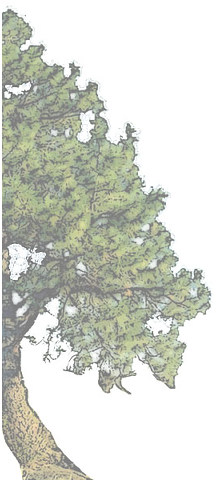

![]() e-mail:
j.george@libertysurf.fr
e-mail:
j.george@libertysurf.fr
Les
Fils de J. George S.A.
96 - 100 avenue Galliéni - 93170 Bagnolet
Tél. 01 43 60 42 71
Fax 01 43 60 86 05


Sawed veneerOur choice to develop the production of sawed veneer can be explained by the fact that being able to obtain sawed veneer without having to steam the wood for several days, as would be the case for sliced veneer, brings a major quality asset to our products. The origin of our sawing method ("au bois montant") can be traced to the end of the XVIIIth century. It enables us to get high quality sawed veneers. Their current thickness range from 12 to 15/10 mm. As we don't have to steam the wood, the latter doesn't need to be washed, thus keeping all its tannins making it much more resistant to the damages of time. It is known that the pores and fibers of steamed wood have a strong tendency to slacken. Sawing veneers implies a perfect cutting of the fibers by the blade of the saw, which means that the blade must be extremely well sharpened. Our sharpening method enables to obtain this quality. The wood surface looks as if it was slightly polished. The sawing marks are hardly visible, thus reducing finishing delays and loss of matter. If observed with a binocular, our veneers show no hint of fiber pulling out, which avoids damageable sawing marks which can be very difficult to eliminate, and sometimes can reappear at varnishing time. The drawings on the left explain how the slicing technique works and show why sawed veneer is much preferred. Slicing consists in pushing in a perfectly sharpened blade, solidly fixed in a blade holder and duly stabilized, into a piece of lumber that has been placed for some time in steam or boiling water. In front of the blade, a pressure bar can be seen which, pushing on the piece of lumber, ensures a regular thickness. It is obvious that even though the blade is well sharpened, it inevitably provokes a pulling out of the fibers, more or less important according to the wood hardness and structure. On the surface of sliced veneers, the presence of pulled out zones can be noticed, which implies many difficulties at finishing time for rubbing down and polishing. It can also be mentioned that sliced veneer being much thinner than sawed veneer (ca. 6/10 mm for 12 to 15/10 mm), "holes" may occcur. As far as hard wood species are concerned (tulip wood, king wood, rosewood), micro-fractures are often reported under the varnish. These micro-fractures become very visible under an oblique low light, which enables us to distinguish the sliced parts which may have been glued on a piece of furniture which was originally made with sawed veneer. This is how you can tell whether a piece of furniture is an original XVIIIth century work. Sawed veneer is also much appreciated by designers for panelling because they have exactly the same colour and aspect as solid wood. |
|